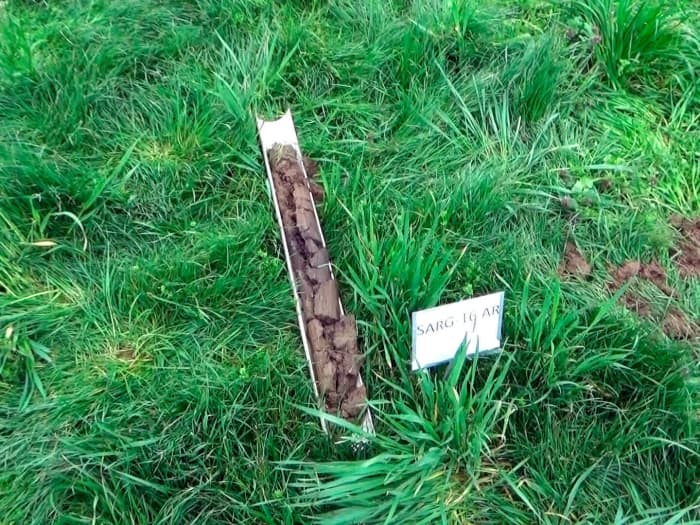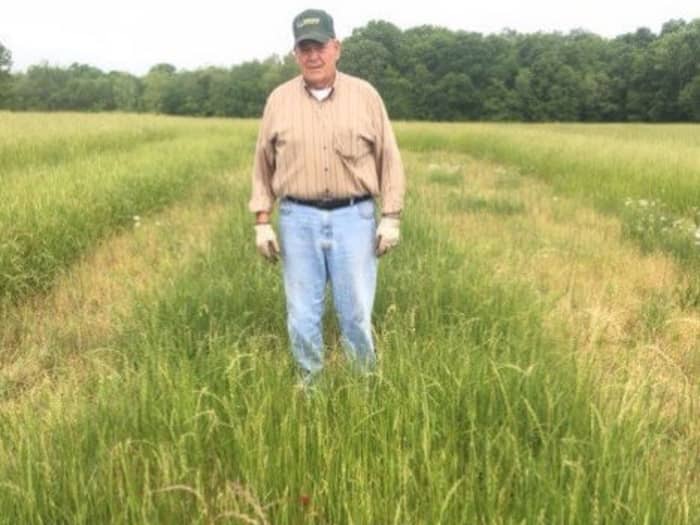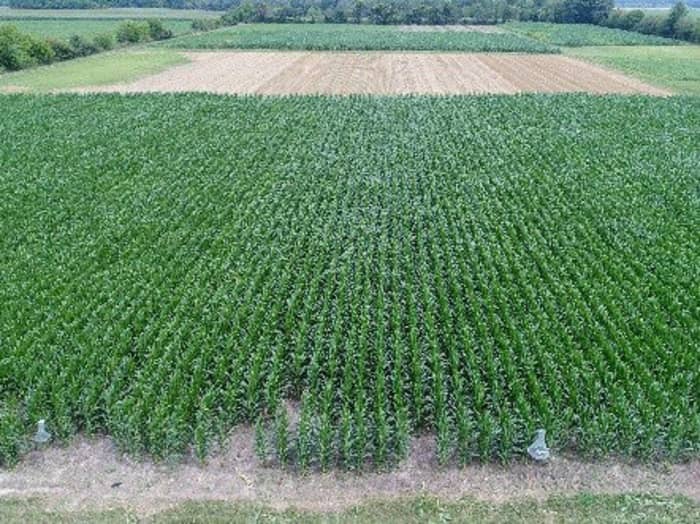Annual Ryegrass Variety Evaluation
Pike Ag, LLC in cooperation with University of Illinois Ewing Demonstration Center Marion.
Marion, IL, 2016-17
Purpose
An annual ryegrass (ARG) variety evaluation was instigated in the fall of 2016 to compare characteristics of 4 ARG varieties and a non-cover crop check, planting the plots to corn in spring 2017 and taken to yield. The 4 varieties in the comparison included LowBoy, PPERC2, KB Royal and Bounty.
Setup
Two locations in southern IL, one near Marion (50 miles north of Cairo, IL at the southern tip of the state) and another at the University of IL Ewing Demonstration Center, about 40 miles farther north, in Franklin County, were utilized. Working with available plot space at each location, a randomized block design with 3 replications was used at Marion and a strip trial with 4 replications was the design at the Ewing site.
Planting Timing and Conditions
The spring of 2016 was very wet which delayed planting of all field crops. As a result, ARG was seeded with a grain drill at the Marion location on September 24, and the Ewing location was drilled on October 23. Normally, ARG seeding in Southern Illinois is targeted for completion by about September 15, however, it was a warm fall with a late freeze so stand establishment turned out to be satisfactory at both farms. The seeding rate was 12#/ac.
Soil Tests and Nitrogen Application
Soil tests to monitor nitrate (NO3) and ammonium (NH4) levels and biomass samples for nutrient analysis and total biomass production were collected on May 9 at Ewing and May 11 at Marion. Corn was planted at Marion on May 11 and at Ewing on May 12. Residual soil N was low in all plots and at both locations with NO3 levels ranging from .34 to 2.8ppm and NH4 levels ranging from 1.66 to 5.43ppm. With N test levels that low, there was no trend or meaningful difference between ARG plots or those with no cover crop. To combat this low N environment for corn establishment N fertilizer was broadcast applied at planting in the form of 100# ESN (46#N) at Marion. The Ewing site did not receive an N application at planting, however side dress N was applied early (V2-3) and no signs of deficiency were noted at any point during the growing season at either location. The Marion site was side dressed with a Y-Drop system at V-6.

Rooting Depth
Soil cores to examine rooting depth were taken May 6, at Marion and May 9 at Ewing. A 2-inch core was taken with a tractor mounted probe to depth of 36”. In each ARG variety, rooting was vigorous and extended deeper than the sampling depth in the claypan soils. While root mass was not measured, the new variety Lowboy was observed to have similar rooting depth, and density as the other varieties as soil cores were dissected. With no differences between ARG varietal rooting characteristics, soil cores after corn harvest were not taken.

Heading Height, Maturity and Biomass
Heading height of Lowboy was less than 24”, whereas Bounty was nearly 40”. Given the stature of the plants, the rooting characteristics of LowBoy were impressive and comparable to that of the other varieties tested. The maturity of LowBoy was also observed to be slightly later than the other varieties utilized in this evaluation.
Where biomass was concerned, the vegetative characteristics did result in a marked difference in tonnage of cover produced (Table 1).
Table 1 - Biomass (Tons DM/AC)
| Variety | Ewing | Marion |
|---|---|---|
| LowBoy | 1.94 | 1.32 |
| PPERC2 | 2.46 | 3.62 |
| KB Royal | 2.88 | 2.53 |
| Bounty | 2.22 | 5.72 |
Termination
With the difference in cover crop planting dates (Sept. 24 vs. Oct. 23), ARG at Ewing was just beginning to head and at Marion was pollinating. In many cases, ARG would ideally be terminated earlier, however, the area had 9 to 16 inches of rainfall during the last week of April and the cover crops were allowed to grow to help dry the soil, whereas earlier burndown applications would have delayed the drying process and planting date into late May. Burndown applications were applied a few days ahead of the May 12 planting date at Ewing, while the Marion location was planted green on May 11 with herbicides applied following that operation on the same day. Excellent control of ARG was achieved and overall weed control was excellent throughout the season at both locations.
Nutrient Levels
When comparing nutrient levels in the ARG biomass; N, P and K percentage levels were generally similar among the varieties compared (Tables 2 & 3). Where differences were noticed it seemed that differences in varietal maturity was probably a factor. However, due to the differences in tonnage produced, nutrient holding or “tie-up” in the biomass was variable. These factors did not prove to be impactful to final corn yield.
Table 2 – Nutrient Levels
Ewing, IL
| Variety | Tons biomas | N% | #/ac | P% | #/ac | K% | #/ac |
|---|---|---|---|---|---|---|---|
| Lowboy | 1.94 | 1.57 | 60.67 | 0.35 | 13.0 | 2.42 | 92.0 |
| Bounty | 2.22 | 1.50 | 78.37 | 0.29 | 13.0 | 2.32 | 103.9 |
| PPERC2 | 2.46 | 1.46 | 71.77 | 0.29 | 14.0 | 2.68 | 131.6 |
| KB Royal | 2.88 | 1.22 | 69.75 | 0.28 | 16.3 | 2.12 | 122.6 |
| AVERAGE | 2.37 | 1.43 | 70.14 | 0.30 | 14.1 | 2.38 | 112.5 |
Table 3 – Nutrient Levels
Marion, IL
| Variety | Tons biomass | N% | #/ac | P% | #/ac | K% | #/ac |
|---|---|---|---|---|---|---|---|
| Lowboy | 1.32 | 1.75 | 46.36 | 0.19 | 5.03 | 2.06 | 54.58 |
| KB Royal | 2.53 | 1.33 | 67.41 | 0.24 | 12.16 | 1.67 | 84.64 |
| PPERC | 3.62 | 1.76 | 127.32 | 0.24 | 17.36 | 2.17 | 156.98 |
| Bounty | 5.72 | 0.81 | 92.74 | 0.14 | 16.03 | 1.74 | 199.23 |
| AVERAGE | 3.30 | 1.41 | 83.46 | 0.20 | 12.65 | 1.91 | 123.86 |

Corn Yields
Overall, weather during the 2017 growing season was favorable for corn production in southern Illinois. Soil conditions at the time of planting were excellent for no till systems. June was relatively dry but showers were timely to get the crop off to a good start. Adequate but not excessive precipitation carried through into July and pollination. August and September turned very dry, however, daytime temperatures were not extremely hot and nights were cooler than normal which allowed the crop to mature fully with good yields for the area at both locations. While there were slight variations in yield, there were no significant differences between corn yields when comparing ARG varieties or check treatment at the respective locations or as a combined dataset (Table 4).
Table 4 – 2017 Corn Yield
| Treatment | Marion | Ewing | Average |
|---|---|---|---|
| Bounty | 201.72 | 175.17 | 188.45 |
| LowBoy | 201.46 | 174.92 | 188.19 |
| Check | 196.77 | 176.96 | 186.87 |
| KB Royal | 199.35 | 173.05 | 186.2 |
| PPERC2 | 202.41 | 168.21 | 185.31 |
General Observations
Later than optimum planting dates for cover crops in the mild fall of 2016, with late September and late October plantings, was a good test for the annual ryegrass variety evaluation. The September planting was well established by the time of a hard freeze and looked good throughout the winter. The October planting was just coming up at that time in early November and all varieties maintained a good stand into the spring in spite of not appearing too vigorous through December and January. The less aggressive (shorter) vegetative characteristics of LowBoy proved to be favorable for corn planting with emerging corn having noticeably better color from emergence to V3 stage than corn in plots growing through heavier levels of residue, provided especially by KB Royal and Bounty.It should be noted that while the corn planted into LowBoy had a better early appearance, there was no difference in stand and all plots including the no-cover check were even by the V-6 stage, with no significant yield differences at harvest. With a lower level of residue, LowBoy provided a nice planting environment and the shorter stature of the plant is not as intimidating as larger varieties in situations of late termination as was the case in this season. This could be helpful to new adopters of cover crops and those learning to manage heavier green residue associated with delayed termination systems. The later maturity of LowBoy observed in this study could also be of benefit as termination timing in the vegetative stages could be achieved a few days later in the spring when warmer weather conditions would be more conducive to herbicide uptake which is key to effective early control. Given the observations and results from this one-year study, LowBoy appears to be a good option as an annual ryegrass choice for cover crop systems in this region.